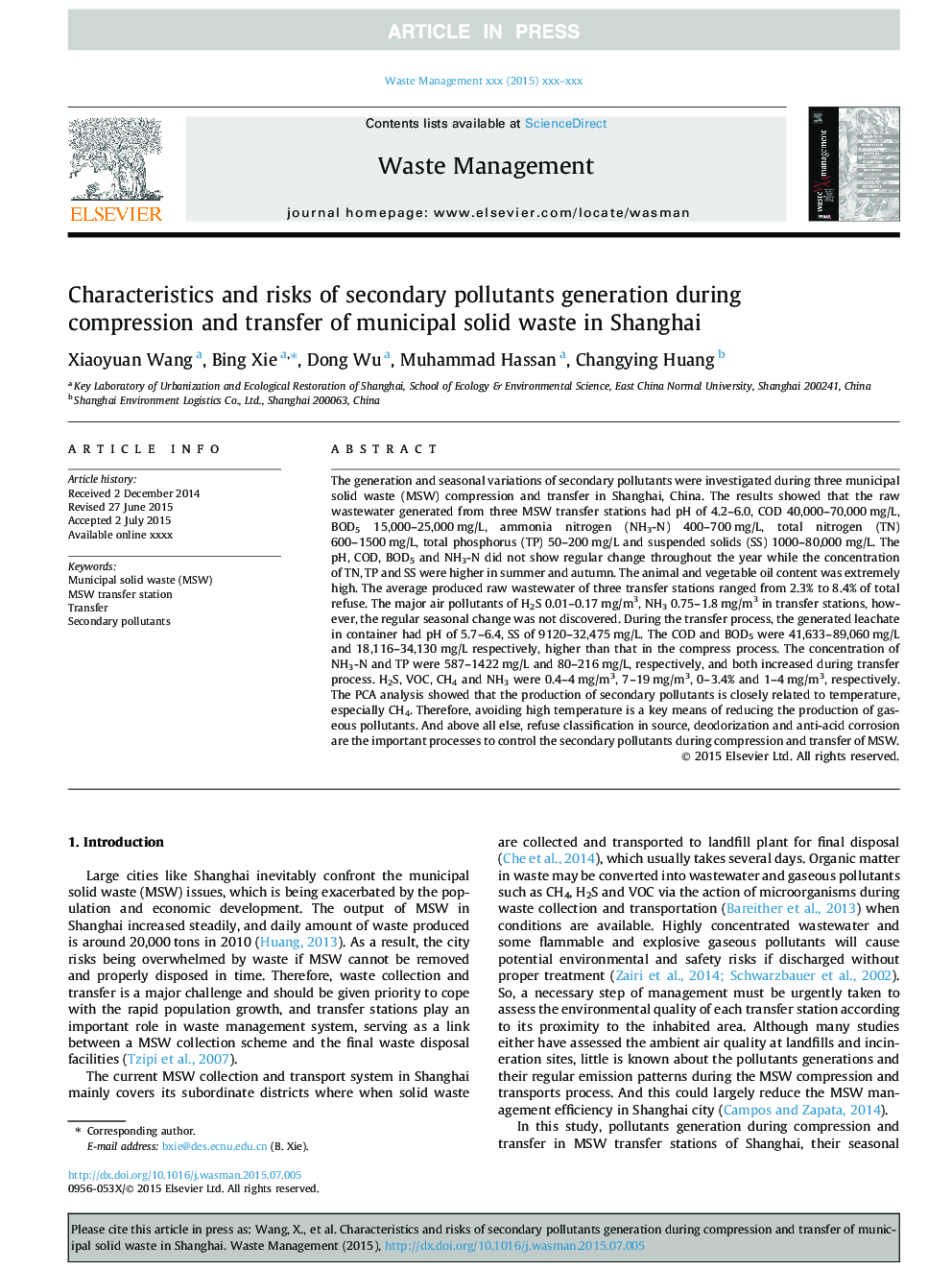| کد مقاله | کد نشریه | سال انتشار | مقاله انگلیسی | نسخه تمام متن |
|---|---|---|---|---|
| 6353889 | 1622642 | 2015 | 8 صفحه PDF | دانلود رایگان |
عنوان انگلیسی مقاله ISI
Characteristics and risks of secondary pollutants generation during compression and transfer of municipal solid waste in Shanghai
ترجمه فارسی عنوان
خصوصیات و خطرات تولید آلیاژهای ثانویه در هنگام فشرده سازی و انتقال ضایعات جامد شهری در شانگهای
دانلود مقاله + سفارش ترجمه
دانلود مقاله ISI انگلیسی
رایگان برای ایرانیان
کلمات کلیدی
موضوعات مرتبط
مهندسی و علوم پایه
علوم زمین و سیارات
مهندسی ژئوتکنیک و زمین شناسی مهندسی
چکیده انگلیسی
The generation and seasonal variations of secondary pollutants were investigated during three municipal solid waste (MSW) compression and transfer in Shanghai, China. The results showed that the raw wastewater generated from three MSW transfer stations had pH of 4.2-6.0, COD 40,000-70,000Â mg/L, BOD5 15,000-25,000Â mg/L, ammonia nitrogen (NH3-N) 400-700Â mg/L, total nitrogen (TN) 600-1500Â mg/L, total phosphorus (TP) 50-200Â mg/L and suspended solids (SS) 1000-80,000Â mg/L. The pH, COD, BOD5 and NH3-N did not show regular change throughout the year while the concentration of TN, TP and SS were higher in summer and autumn. The animal and vegetable oil content was extremely high. The average produced raw wastewater of three transfer stations ranged from 2.3% to 8.4% of total refuse. The major air pollutants of H2S 0.01-0.17Â mg/m3, NH3 0.75-1.8Â mg/m3 in transfer stations, however, the regular seasonal change was not discovered. During the transfer process, the generated leachate in container had pH of 5.7-6.4, SS of 9120-32,475Â mg/L. The COD and BOD5 were 41,633-89,060Â mg/L and 18,116-34,130Â mg/L respectively, higher than that in the compress process. The concentration of NH3-N and TP were 587-1422Â mg/L and 80-216Â mg/L, respectively, and both increased during transfer process. H2S, VOC, CH4 and NH3 were 0.4-4Â mg/m3, 7-19Â mg/m3, 0-3.4% and 1-4Â mg/m3, respectively. The PCA analysis showed that the production of secondary pollutants is closely related to temperature, especially CH4. Therefore, avoiding high temperature is a key means of reducing the production of gaseous pollutants. And above all else, refuse classification in source, deodorization and anti-acid corrosion are the important processes to control the secondary pollutants during compression and transfer of MSW.
ناشر
Database: Elsevier - ScienceDirect (ساینس دایرکت)
Journal: Waste Management - Volume 43, September 2015, Pages 1-8
Journal: Waste Management - Volume 43, September 2015, Pages 1-8
نویسندگان
Xiaoyuan Wang, Bing Xie, Dong Wu, Muhammad Hassan, Changying Huang,
